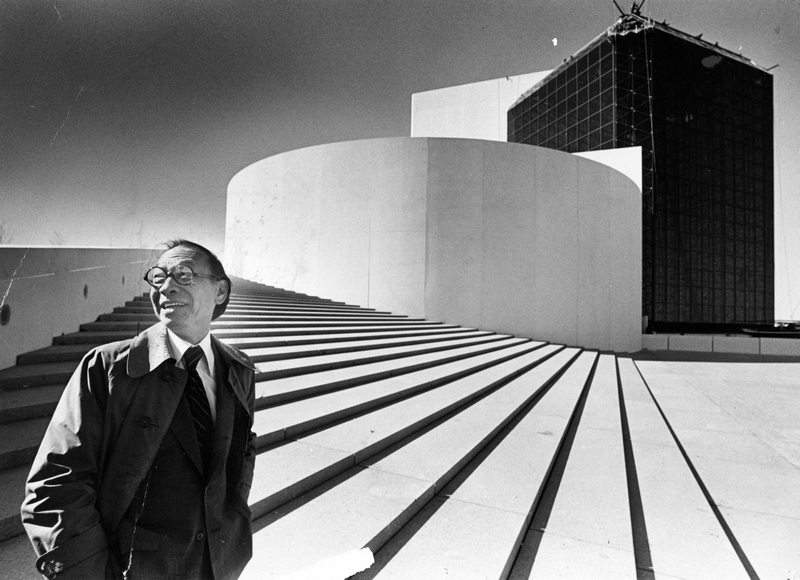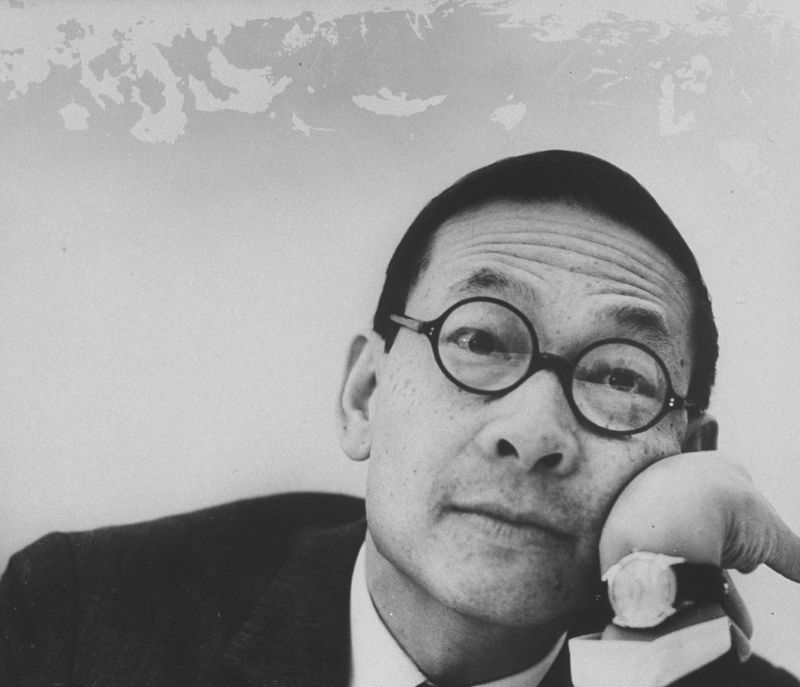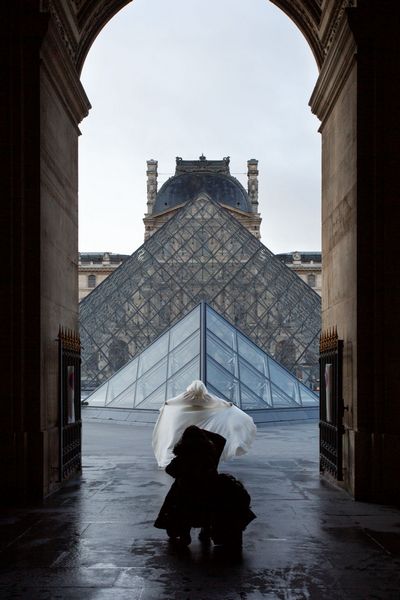(30 April 2024, Hong Kong) M+, Asia’s global museum of contemporary visual culture in the West Kowloon Cultural District in Hong Kong, will present I. M. Pei: Life Is Architecture, the first full-scale retrospective of Chinese American architect Ieoh Ming Pei (1917–2019), widely known as I. M. Pei, one of the most influential architects of the twentieth and twenty-first centuries, with priority ticket sales starting Friday, 26 April 2024 and public ticket sales starting Friday, 3 May 2024. Generously supported by the Lead Sponsor Bank of China (Hong Kong), this Special Exhibition will be held in the museum’s West Gallery from Saturday, 29 June 2024 to Sunday, 5 January 2025.
The first full-scale retrospective of I. M. Pei
Pei’s high-profile projects were realised over seven decades with an exceptionally wide geographic reach, including the National Gallery of Art East Building in Washington, D.C., the modernisation of the Grand Louvre in Paris, the Bank of China Tower in Hong Kong, and the Museum of Islamic Art in Doha. These landmark projects solidified his legacy and position in architectural history and popular culture. His life and work weave together a tapestry of power dynamics, geopolitical complexities, and cultural traditions around the world. His transcultural vision laid the foundation for the contemporary world.
Organised with the support of the Estate of I. M. Pei and Pei Cobb Freed & Partners, which succeeded the architectural firm Pei founded, the exhibition is curated by Shirley Surya, Curator, Design and Architecture, M+, and Aric Chen, General and Artistic Director, The New Institute, Rotterdam. This retrospective features more than three hundred objects, many of them never exhibited before. These include original drawings, architectural models, photographs, films, and other archival documentation from institutional and private holdings.
The exhibition takes a close look at Pei’s life and work through six areas of focus that not only define his unique practice, but also place his architectural projects in dialogue with social, cultural, and biographical trajectories, showing architecture and life to be inseparable. These areas are:
- Pei’s Cross-Cultural Foundations shows how Pei’s upbringing and architectural education formed the foundation of his ability to reconcile multiple sources of influence across cultures and between tradition and modernity.
- Real Estate and Urban Redevelopment unveils a lesser-known phase of Pei’s career as part of real estate developer Webb & Knapp in New York City. It explores his contributions to mixed-use planning, housing, and urban revitalisation projects in the United States in the 1960s, and subsequently beyond American borders.
- Art and Civic Form introduces Pei’s museum designs and his frequent collaborations with artists from Henry Moore to Zao Wou-Ki. The section demonstrates his belief in museums as civic spaces, the importance of dialogue between art and architecture, and his deep affinity with the contemporary art of his time.
- Power, Politics, and Patronage reveals how Pei—with his technical mastery, ingenious problem-solving, and sensitivity to client needs—became a trusted collaborator in high-profile commissions that drew both immense support and public controversy throughout his career.
- Material and Structural Innovation illustrates Pei and his team’s consistent inventiveness in the use of materials and construction methods, especially with concrete, stone, glass, and steel.
- Reinterpreting History through Design examines Pei’s long-standing interest in making modern architecture relevant to different histories, traditions, and ways of life, particularly those related to his birthplace. Pei distilled the essence of cultural and historical archetypes to provide formal or spatial strategies for contemporary needs.
Doryun Chong, Deputy Director, Curatorial, and Chief Curator, M+, says, ‘This exhibition is the result of years of research into original archival materials documenting Pei’s outstanding career. It follows the trajectory of his work across the world, highlighting his long-lasting impact on architecture today. This exhibition epitomises M+’s focus on Asia through a transnational framework. Looking at both iconic and lesser-known projects, the process has also led to new acquisitions of architectural models and archival materials that enrich the museum’s collection.’
Shirley Surya and Aric Chen, co-curators of I. M. Pei: Life Is Architecture, say, ‘Though one of the world’s most famous architects, I. M. Pei and his contributions are relatively little understood. We hope this exhibition will further shed light on a figure who influenced countless individuals, cities, and, indeed, the world. Pei drew from the regional while shaping the global. His work articulated artistic and cultural ideals while forging urban skylines—negotiated through dialogue and collaboration, and with results that innovated architectural forms and feats of engineering. It has been a privilege to bring together largely unseen materials from the archives of Pei Cobb Freed & Partners, the Library of Congress, Pei’s family, Pei’s clients, and his collaborators at various points in his career for the first time. The picture that emerges is a practice fundamentally intertwined with crucial developments in architecture, urbanism, nation building, and institutional identities across a wide range of geographies.’
To engage a new generation of architecture students with the work of I. M. Pei, M+ has partnered with two master’s programmes focusing on the design of tall structures and cultural spaces at the University of Hong Kong Department of Architecture and The Chinese University of Hong Kong School of Architecture, respectively. Students have created five models of Pei’s significant built and unbuilt projects. These include ‘Museum of Chinese Art for Shanghai’ (1946, unbuilt), his master’s thesis for Harvard University’s Graduate School of Design; Hyperboloid (1954–1956, unbuilt), New York; and Luce Memorial Chapel (1954–1963), Tunghai University, Taichung.
The exhibition also features newly commissioned photographs of eleven of Pei’s built projects by seven international photographers, taken during the pandemic, to reconsider the enduring influence of Pei’s work. The photographers are South Ho Siu Nam (Hong Kong), Naho Kubota (New York City), Lee Kuo-Min (Taipei), Giovanna Silva (Milan), Mohamed Somji (Dubai), Tian Fangfang (Shanghai), and Tomoko Yoneda (Tokyo/London).
To coincide with the exhibition, a 400-page monograph I. M. Pei: Life Is Architecture with 471 colour illustrations will be published in June 2024 by Thames & Hudson in collaboration with M+. The title presents both celebrated and lesser-known aspects of Pei’s life and career by featuring largely unpublished archival materials, newly commissioned photographs and essays, as well as personal anecdotes from scholars and those who knew and worked with Pei.

I. M. Pei: Life Is Architecture is generously supported by the Lead Sponsor Bank of China (Hong Kong), Bei Shan Tang Foundation, the Family of S. P. Tao, Travel Partner Cathay, and Hotel Partner The Ritz-Carlton, Hong Kong.
For more information, please visit https://www.mplus.org.hk.
















